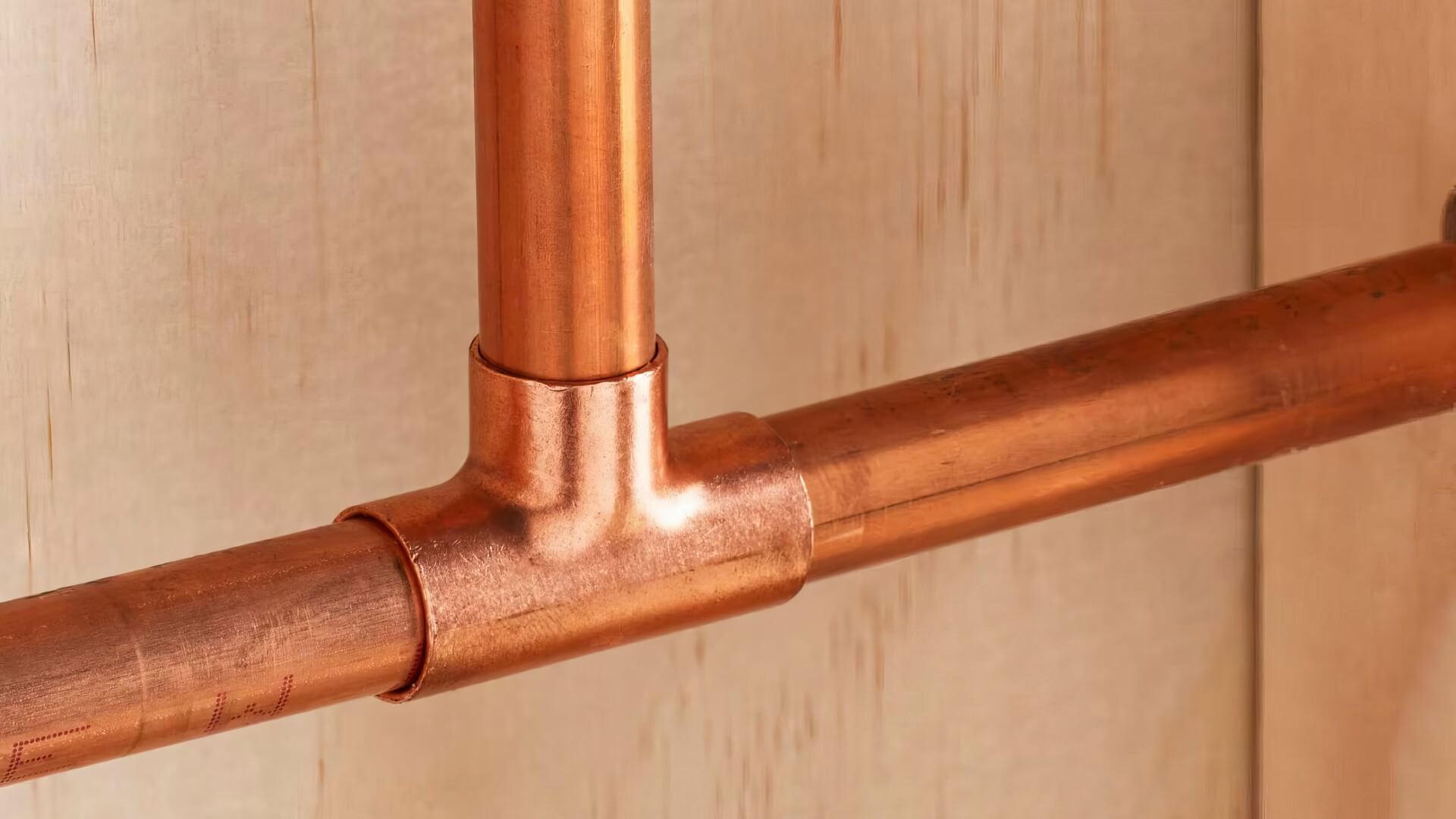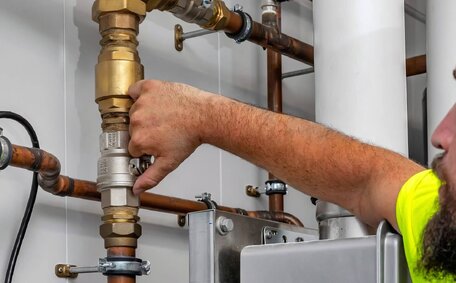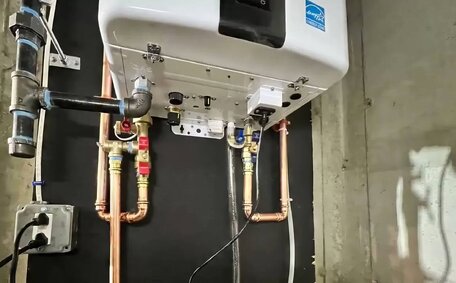Introduction to Epoxy Resin Used in Pipe Relining
Epoxy resin is an integral material for effective pipe relining.
With superior chemical resistance and adhesive qualities that bond firmly to substrates, epoxy coatings provide restored structural stability and prolonged service life to deteriorating plumbing systems. This robust plastic compound contains curatives that allow it to cure and harden once injected into piping, forming a rigid internal sleeve that withstands pressure, abrasion, and corrosion.
As leading plumbing specialists based in Epping, Sydney, we frequently rely on epoxy resins to carry out trenchless pipe rehabilitation for residential and commercial customers. By assessing the property and longevity of these materials, we can better determine the long-term performance of relining projects and appropriately set client expectations.
In this article, we’ll explore the typical lifespan of epoxy resin linings under standard conditions and outline the various factors that affect durability.
We’ll also provide maintenance advice to get the most out of your epoxy investment and troubleshoot common issues regarding contamination, UV light exposure, wear damage, and expired shelf life that influence the lifespan.
Average Lifespan of Epoxy Resin in Pipe Relining Applications
When properly installed and cared for, epoxy resin linings used in pipe relining can last approximately 10 to 20 years under typical service conditions. Industrial-grade epoxy formulas suitable for pressurised plumbing systems are engineered for maximal chemical resistance, structural integrity and prolonged durability in infrastructure applications.
In commercial settings prone to heavy usage, abrasion and/or chemical exposure from conveying corrosive media, we generally project a 10-15 year service life for epoxy relined piping. Preventative maintenance is paramount for industrial clients to achieve this timeline and address wear or contamination issues early on.
For residential settings subject to lower flow demands, an epoxy lining is expected to last 15-20 years if UV light exposure is minimised and temperatures remain relatively stable. Smaller diameter pipes relicned in a home see less friction, allowing the epoxy barrier enhanced longevity.
As your local plumbing experts, Epping Plumbing relies on advanced CIPP epoxy resins to rehabilitate pipe systems across Epping and surrounding regions. By following the proper application procedures and monitoring environmental conditions in each unique setting, we strive to help our relining customers realise the full 10-20 year service potential from their custom-cured epoxy linings.
Factors Affecting the Longevity of Epoxy Resin Linings
There are several key factors that can affect how long an epoxy resin lining will last inside pipes before needing replacement:
- Environmental Temperature and Humidity - Epoxy resins used for CIPP pipe relining are designed to cure at 60-100°F. Prolonged exposure to temperatures exceeding 140°F can accelerate ageing and shorten service life. Similarly, very humid or consistently damp conditions allow moisture ingress that degrades epoxies over time.
- Pipe Configuration and Structural Integrity - Severely corroded, fractured or misaligned pipes undermine the epoxy barrier, causing it to crack or debond. Ensuring host pipes are properly evaluated and prepared is crucial for longevity.
- Fluid Characteristics and Flow Rate - While epoxies offer robust chemical resistance, constant exposure to harsh solvents, oils or unusually acidic/caustic fluids can degrade linings faster. High velocity turbulent flow also creates substantial friction that erodes epoxy over time.
- UV Exposure - UV light will gradually embrittle and discolour unprotected resin linings. We always recommend encasing exterior relined pipes or coating them to shield from sunlight.
- Installation Workmanship - Improper saturating, curing or finishing of epoxy linings often causes premature cracking or separation. Our licenced technicians follow strict protocols to maximise adhesion and durability.
Temperature Effects on Epoxy Resin
Ambient temperature conditions have a major influence on epoxy resins used for relining applications. As an exothermic curing material, the epoxy’s reaction rate doubles for every 10°C (18°F) rise in temperature. This exponentially accelerates curing and shortens its usable “pot life” after mixing.
Manufacturers formulate industrial epoxy resins to cure at 20-30°C, providing around a 30-60 minute pot life for our technicians to inject linings before hardening begins.
However, on hot Australian summer days, tunnel or pipe temperatures underground can reach 35-45°C in the Epping area. Such extreme heat would essentially halve the resin’s pot life, making application much more challenging.
Besides logistical difficulties for installers, premature gelation from excessive ambient heat risks airflow restrictions that leave weak spots. Ultimately, the long-term durability of improperly cured epoxy linings will be compromised. There also exists a “maximum service temperature” threshold where heated operation above 130-150°C degrades most formulations.
As seasoned veterans carrying out pipe relining across Sydney, Epping Plumbing closely monitors underground temperatures before deploying epoxy resins. If conditions risk a reduced pot life or botched cure, we reschedule lining until pipe environs cool to permit ideal 20-30°C polymerisation.
This diligence lets us deliver the maximum lifespan clients expect from their epoxy investment.
Exposure to Moisture and Contaminants
Exposure to moisture and chemical contaminants can also deteriorate epoxy resin linings over time. Since epoxies contain hydrophilic groups, absorption of ambient moisture creates hydroxyl compounds that degrade polymer chains. Chemical substances like oils, solvents, or unusually caustic media can also damage linings through dissolution.
Preventing contamination ensures optimal longevity. We also purge any standing water inside pipes beforehand.
For damp underground settings around Epping, proper waterproofing of access pits and sealed entry points helps keep moisture away from freshly applied linings. For industrial clients conveying problematic fluids, containment barriers or polyethylene layers provide supplementary chemical resistance if epoxy alone is inadequate.
Besides liquids, airborne dust and particulates make linings vulnerable during repairs or construction. In these situations, we place natural fibre filter socks at pipe openings to catch debris before it bonds to tacky epoxy. Strict contamination controls not only maintain integrity of existing linings, but allow future rehabilitations to bond properly when the time comes.
Maintenance to Prolong Epoxy Resin Effectiveness
There are several key maintenance practises that can prolong the effectiveness and lifespan of epoxy resin linings in relined piping:
- Regular Cleaning - Over time, scale, grime and contaminants accumulate inside pipes, risking epoxy adhesion. Periodic cleaning helps prevent buildup and sustain performance.
- Immediate Repairs if Damaged - Cracks or gouges expose the epoxy lining to moisture intrusion and chemical attack. Quick remediation by injecting fresh resin prevents bigger issues.
- Avoid Harsh Chemical Cleaners - Caustic drain decloggers and acidic cleaners degrade epoxy over repeated use. Milder enzymes or biological cleaners are gentler long-term.
- Re-apply Protective Topcoats - Supplementary epoxy topcoats, polyureas, or UV-resistant gelcoats help maintain waterproofing and chemical resistance as linings age.
- Inspect Annually - Technicians can verify lining integrity and troubleshoot defects using CCTV pipe inspection. Catching problems early better preserves epoxy.
As Epping’s trusted local plumbing provider, we take great pride in prolonging the value of pipe relining investments for residential and commercial customers. By providing tailored maintenance plans and rapid response to repair damages, Epping Plumbing helps ensure your epoxy linings achieve their maximum functional lifespan.
Storage and Shelf Life of Epoxy Resin
When stored correctly, the shelf life of epoxy resins used for relining can extend for 12-24 months from the production date before reactivity starts to decrease. To maximise shelf life, resin containers should be kept sealed and stored at room temperature away from direct sunlight, moisture, and severe temperature fluctuations.
Storage areas should maintain steady temperatures between 20-25°C. Exposing epoxy resins to sustained heat over 30°C or freezing conditions accelerates degradation and shortens usable shelf life. Resins should also avoid moisture sources and humid environments which can hydrolyze polymers over time.
Another factor is exposure to UV light which gradually cures surface layers, making proper mixing impossible. We recommend keeping resin containers in opaque plastic pails or metal drums to limit light penetration during storage. Containers should remain sealed with tight-fitting lids to prevent dust and airborne contaminants from entering.
By following these guidelines, most quality epoxy formulas retain a 1-2 year shelf life before noticeable declines in curing performance occur. Monitoring batch numbers and turn over stock accordingly is key. If ever unsure whether older resin is still viable, we can perform simple benchtop tests assessing cure rate, hardness and bonding strength.
Testing and Assessing Aged Epoxy Resin
Periodically testing and assessing the viability of aged epoxy resin stock is crucial for both performance assurance and safety precautions during relining jobs. As stored containers approach or exceed the manufacturer’s stated shelf life, the resin’s curing behaviour and mechanical properties can decline to varying degrees.
To accurately evaluate usability, crews first check for visual signs of degradation like crystallisation or stratification. To accurately evaluate usability, crews first check for visual signs of degradation like crystallisation or stratification.
Pot life assessments also provide quantitative data by mixing small samples with hardener at room temperature and monitoring how long the resin takes to gel.
More extensive lab verification such as shore hardness and lap shear tests better indicate resin strength but require sending samples to quality control facilities. Safely determining the usable shelf life via testing protects the integrity of relining projects and avoids risks associated with injecting poorly-cured resin into confined spaces.
As industry specialists maintaining extensive epoxy resin inventories, Epping Plumbing incorporates rigorous in-house testing capabilities alongside third-party lab partnerships. We thoroughly assess aged stock health to determine satisfactory performance benchmarks for relining jobs, ensuring only viable materials are deployed to provide clients full value and safety.
Mitigating External Damage to Epoxy Resin Linings
There are several effective strategies to mitigate external damage and prolong the lifespan of epoxy resin linings in relined pipes around properties in the Epping area:
- Shield Above-Ground Pipes from Sunlight - For exterior pipe sections, encase the epoxy lining with a UV-resistant barrier such as polyethylene tape, aluminium foil, or waterproofing membranes to prevent sunlight degradation.
- Protect from Heavy Vehicles - Cover shallow pipe runs underneath driveways or loading yards with steel plates to prevent cracks from heavy traffic. Also backfill around pipes with sand instead of stone to evenly distribute loads.
- Contain Harsh Chemical Exposure - Where relined pipes carry highly corrosive fluids, use supplementary PVC or HDPE sleeves to isolate and contain chemical contact with the epoxy layer. Periodically monitor lining integrity.
- Repair Damage Early On - Inspect existing linings routinely, especially after nearby construction. Rapidly patch any gouges, cracks or leaks with fresh epoxy resin to forestall bigger failures or pipe collapses.
As Epping’s trusted local plumbing provider, we take every precaution to safeguard our pipe relining work against preventable damage. This ensures our epoxy solutions deliver lasting value and performance for residential and commercial customers throughout the area.






